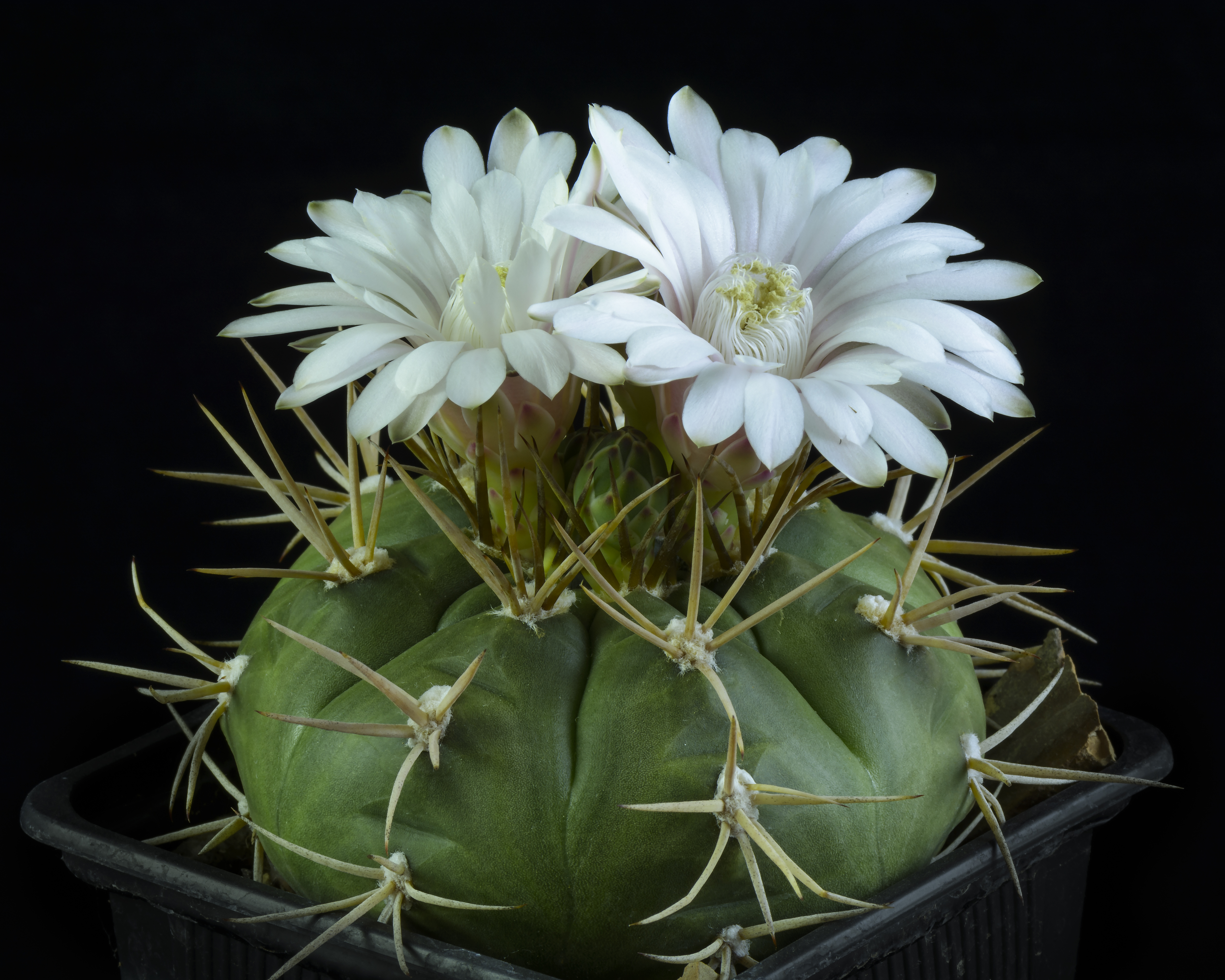Gymnocalycium eurypleurum
(Gymnocalycium eurypleurum)

Description
Gymnocalycium eurypleurum is a small "chin cactus" that is highly prized by cactus collectors and is known to be fairly easy to grow, albeit very slow It has been cultivated outside in latitudes as far north as Modesto, California. In the wild, the species is almost always solitary (non-clumping) and may grow in association with Frailea species. The species when grown in the greenhouse is also known for its fidelity to wild specimens. It is said to live in seasonally very dry habitat (annual rainfall 50–80 centimetres or 20–31 inches), clay soils between 6.8–7.2 pH, and maximum temperatures to 50 °C (122 °F). Gymnocalycium eurypleurum is an endemic specie from Paraguay. Friedrich Ritter describes the range of the species as, "even more vast than generally known. We found G. eurypleurum until close to the military station of Fn. Palmar de las Islas, up in the north near the Bolivian border. Here the species coexisted together with the beautiful Echinopsis chacoana, Gymnocalycium mihanovichii var. stenopleurum and Frailea spec." Gymnocalycium, commonly called chin cactus, is a genus of about 70 South American species of cactus. The genus name Gymnocalycium (from Greek, "naked calyx") refers to the flower buds bearing no hair or spines. Their main area of distribution is Argentina, part of Uruguay, Paraguay, southern Bolivia and part of Brazil. Most species are rather small varying from 4 to 15 centimetres in size. In cultivation they are popular for their easy flowering habits, and the flowers are generally brightly coloured. Where temperatures fall below 10 °C (50 °F) they must be cultivated under glass with heat.
Taxonomic tree:







